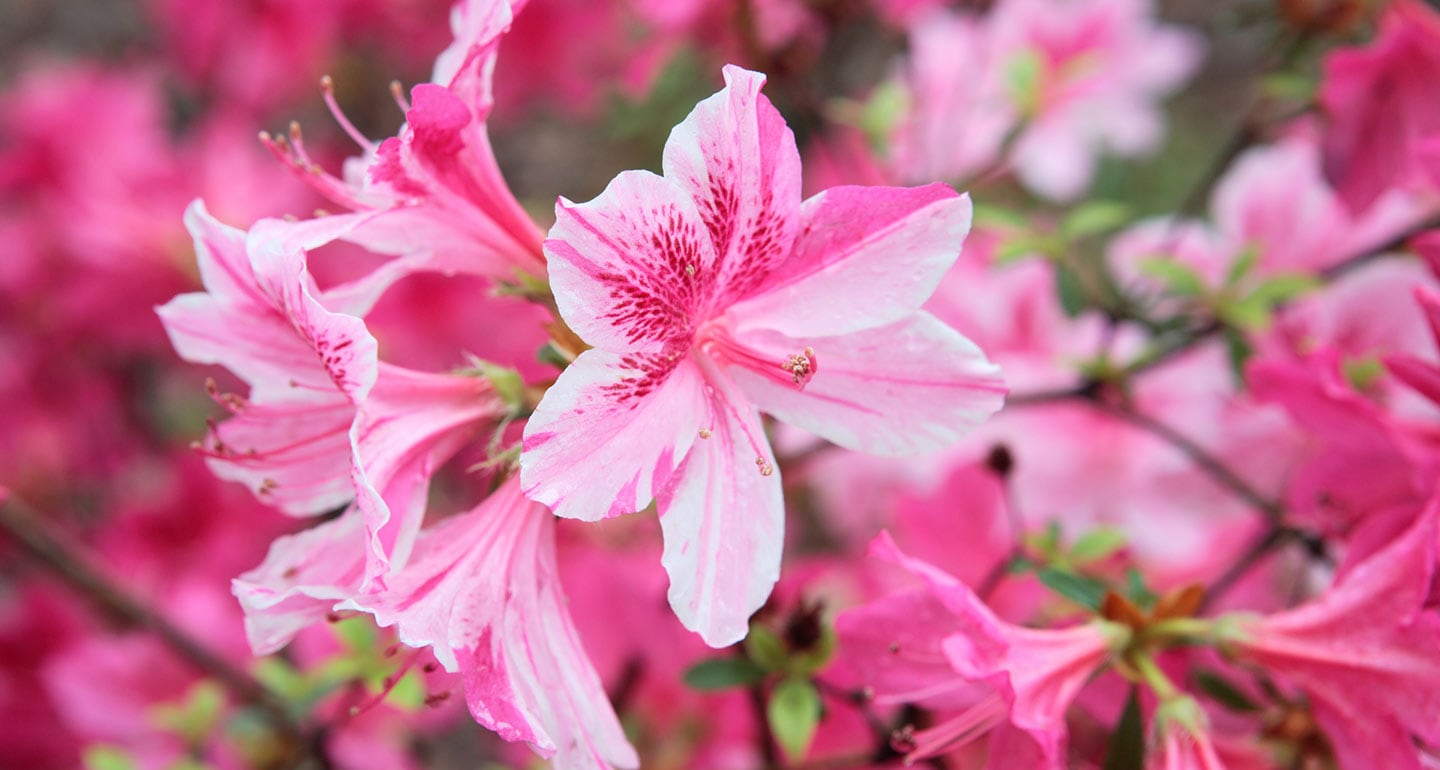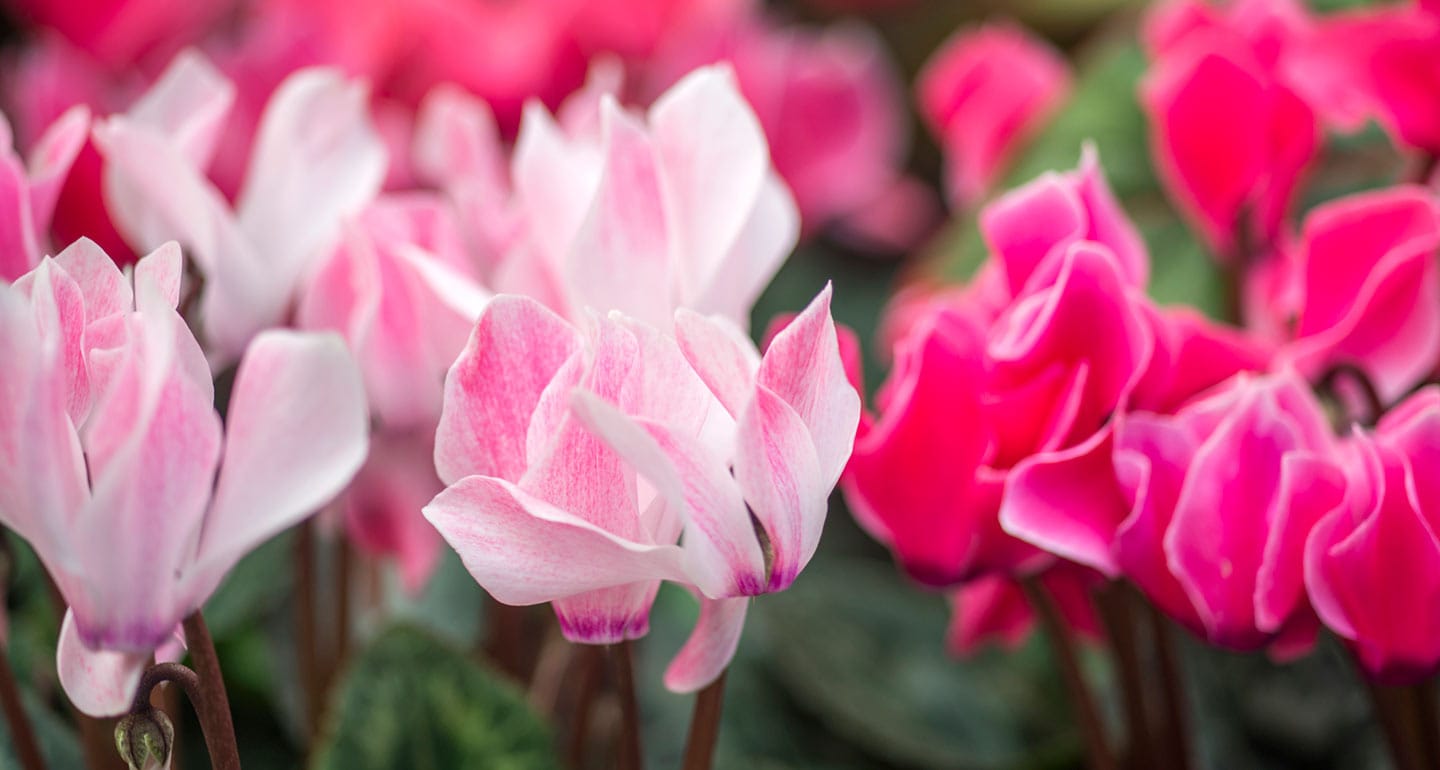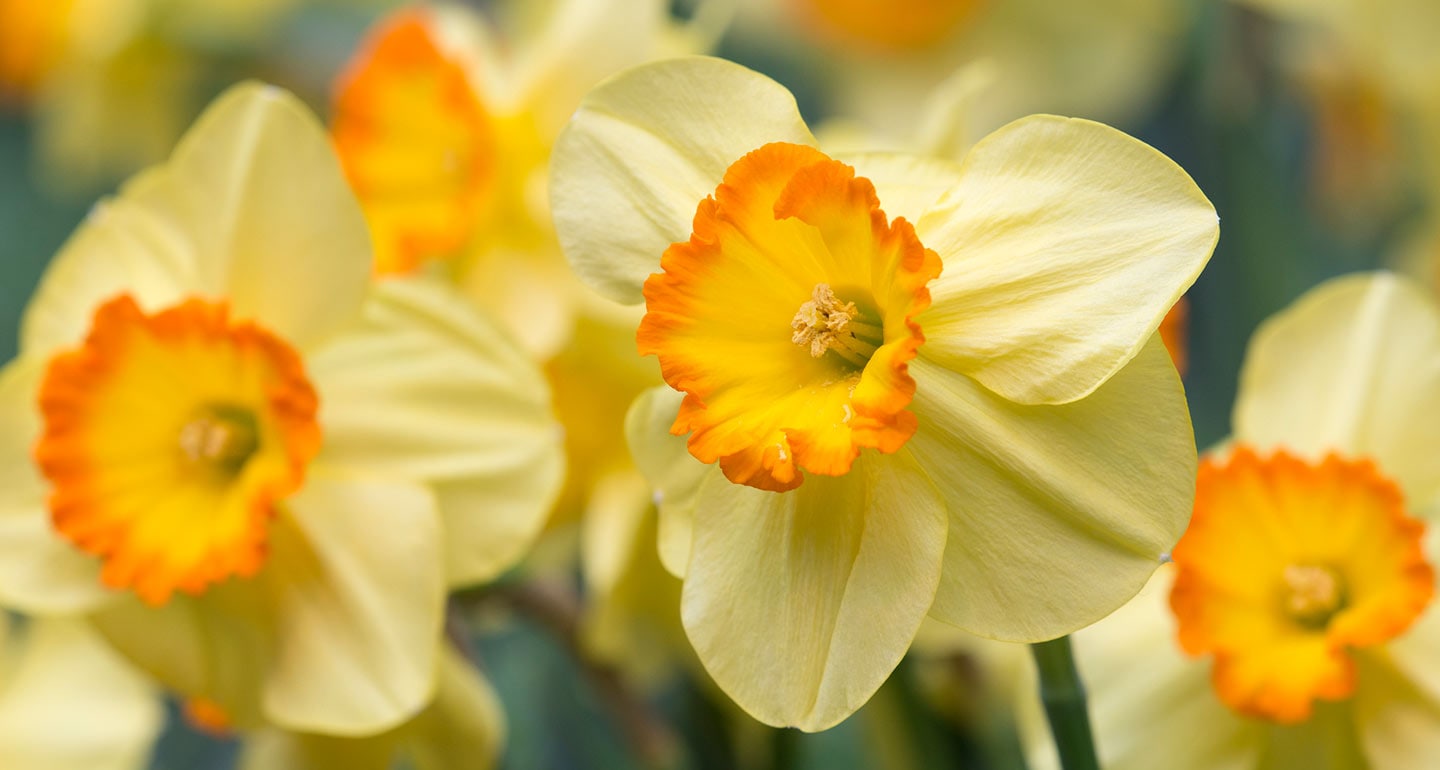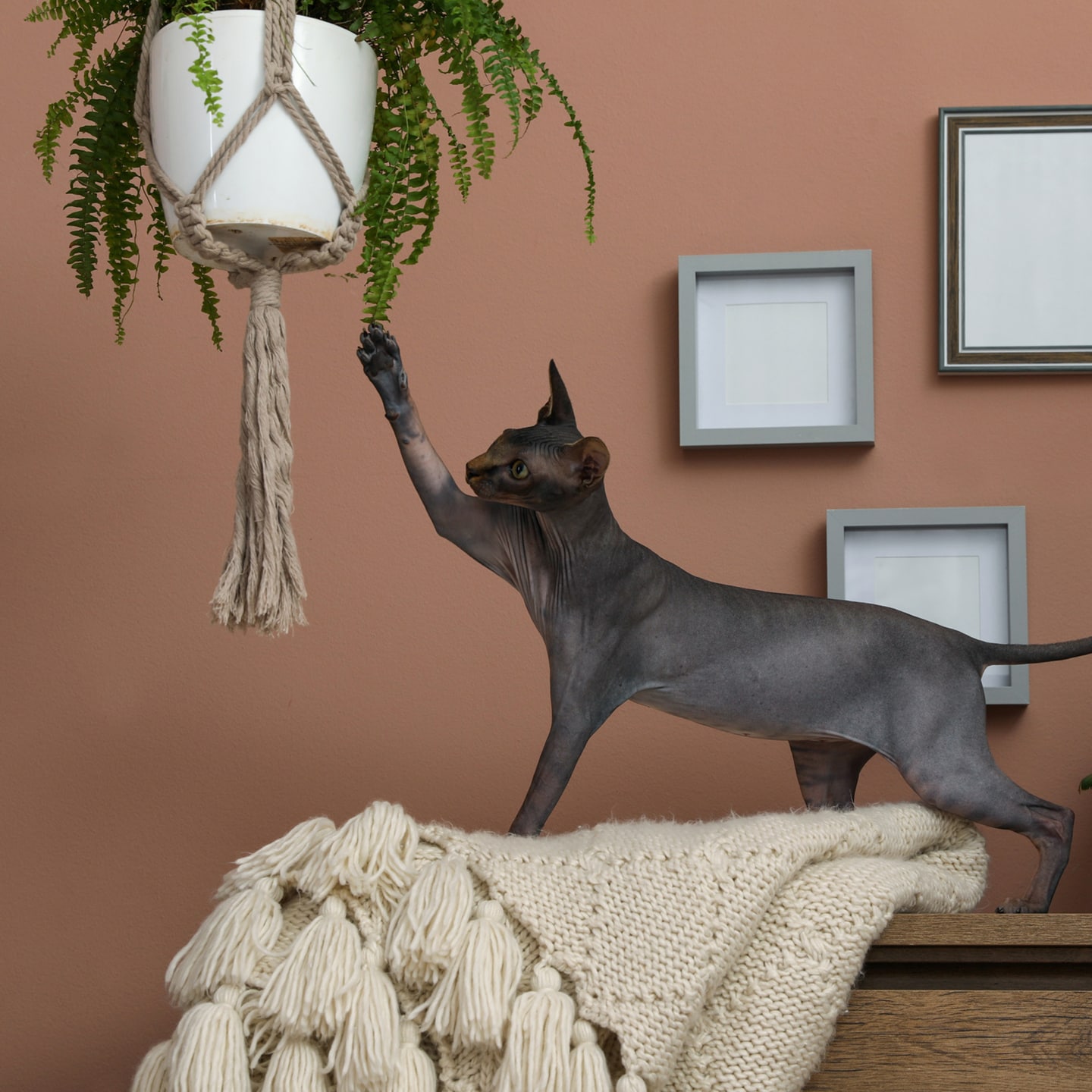All cat parents should know the most common plants that are poisonous to cats. Whether in your yard or in your home, you’ll want to keep certain plants and flowers away from your feline companions. The toxicity of various plants and flowers can range from mild to severe, depending on the poisonous component of the plant.
The ASPCA Animal Poison Control Center reported that in 2021, nearly 10 percent of all calls were related to pets ingesting plants toxic to them, making it fifth on their list of the top 10 pet toxins.
"It is best to familiarize yourself with the list of toxic plants and keep these types of plants out of your home or garden for the health and safety of your pet," says Dr. Tina Wismer, DVM, DABVT, DABT, the center’s medical director. "For indoor plants, cats are likely to ingest the plants. Make sure to keep all plants out of paws' reach. Cats are good climbers, so it's best to move plants to a safe place they cannot access and don’t underestimate their ability to get at things that are high up."
One plant that is extremely dangerous to cats is the lily.
"Lilies are a very big deal because they cause acute, potentially fatal kidney failure," says integrative veterinarian Carol Osborne, DVM, of the Chagrin Falls Pet Clinic in Chagrin Falls, Ohio.
Dr. Osborne once treated a very sick cat who, as it turned out, had ingested a lily. The cat was hospitalized, treated with intravenous fluids and given supportive care to restore her kidney function. Because the cat’s parent took her in right away, she survived her dangerous encounter with the lily plant—and the parent learned a valuable lesson: "Cats and plants don’t really mix," Dr. Osborne says.
So, what plants should cat parents be on the lookout to avoid? Start with this list of plants that are poisonous to cats, which rounds up the varieties you and your feline are most likely to encounter.

Autumn Crocus

The autumn crocus (Colchicum autumnale), also known as meadow saffron or naked lady, is a common ornamental flowering plant that blooms in the fall. Autumn crocus is poisonous to dogs, cats and horses, according to the ASPCA Animal Poison Control Center. It’s especially toxic to cats because of its alkaloid colchicine content, according to the Pet Poison Helpline. All parts of the plant are highly toxic.
According to the Pet Poison Helpline, cats that ingest autumn crocus may show gastrointestinal signs (for instance, drooling, vomiting and bloody diarrhea), breathing difficulties, seizures, kidney and liver damage, and even death. Symptoms might be evident shortly after ingestion or could take days to show up.
Azaleas and Rhododendrons

Azaleas and rhododendrons (Rhododendron spp.) are related species of flowering shrubs and small trees that are toxic to cats. There are more than 1,000 species in this family of plants, and the degree of toxicity varies from moderate to severe, according to the Pet Poison Helpline. The toxic component is called grayanotoxins. All parts of the plant are toxic and a cat can become poisoned by ingesting a tiny amount of the plant.
Symptoms of azalea or rhododendron poisoning, according to the ASPCA Animal Poison Control Center, include gastrointestinal signs (drooling, vomiting, diarrhea, lack of appetite), heart arrhythmias, weakness, tremors, transient blindness, seizures, coma and death). If you have this species in your yard, don’t allow your cat to come into contact with it, and avoid bringing flowers or plant clippings into the house.
Cyclamen

Cyclamen (Cyclamen spp.), also known as Persian violet and sowbread, is a genus of more than 20 species of perennial flowering plants that are often kept indoors. The tubers and roots are the most toxic, but all parts of the plant contain the toxic component, saponins, according to the Pet Poison Helpline.
According to the ASPCA Animal Poison Control Center, signs of cyclamen toxicity involving small amounts of the plant include drooling, vomiting and diarrhea. If a cat ingests large quantities of cyclamen, it can experience abnormal heart rate and rhythm, seizures and death. Cat parents should not keep this houseplant indoors.
Narcissus (including Daffodils)

Most plants that fall into the genus Narcissus, including daffodils (also called jonquil, paper white or Narcissus), are flowering spring perennials. All parts of the plant contain the poisonous agent lycorine, but the bulbs are the most toxic, according to the Pet Poison Helpline.
Lycorine causes drooling, vomiting, diarrhea and abdominal pain. In some cases, cats who ingest daffodils and other plants in the Narcissus genus experience cardiac arrhythmias, extremely low blood pressure, breathing difficulties and convulsions, according to the ASPCA Animal Poison Control Center. Cat parents should not keep daffodils or related plants in the house, and should not plant daffodils in the yard if the cat has access. Gardeners must take care to keep daffodil bulbs away from cats.
Dieffenbachia

Dieffenbachia is (Dieffenbachia spp.), known as charming dieffenbachia, dumb cane, exotica perfection, giant dumb cane, gold dieffenbachia, spotted dumb cane, tropic snow, and variable dieffenbachia, is part of a genus of tropical flowering plants in the Araceae family.
This common houseplant contains insoluble calcium oxalate crystals, which cause oral irritation (burning feeling in the mouth, drooling, vomiting, difficulty swallowing), according to the Pet Poison Helpline. Although generally not deadly, exposure to this plant is painful and extremely uncomfortable for cats, so these plants should not be kept in homes with cats.
Kalanchoe

The flowering houseplant kalanchoe (Kalanchoe spp.) is also known as mother-in-law plant, devil’s backbone, mother-of-millions and chandelier plant.
All parts of this plant contain toxins called bufadienolides, which generally cause gastrointestinal signs (drooling, vomiting and diarrhea), according to the ASPCA Animal Poison Control Center. Rarely, if cats ingest large quantities of kalanchoe, they might experience more severe symptoms, including heart arrhythmias, collapse and seizures, according to the Pet Poison Helpline. Cat owners should not keep this plant in the home.
Lilies

Although many plants contain the word “lily” in their name, Dr. Wismer says, certain species are the most dangerous to cats, including Asiatic lilies, Easter lilies, Japanese show lilies, rubrum lilies, stargazer lilies, red lilies, tiger lilies, Western lilies, wood lilies, and daylilies.
“Easter lilies are very dangerous for cats; ingestion of any part of the plant, or even the pollen, can cause kidney failure,” Dr. Wismer says.
Cats need only ingest a tiny bit of the aforementioned lilies (for instance, chewing on one or two petals or leaves) to take in enough toxin to cause death. Even just licking the pollen from the flowers or drinking water from the vase of lilies can spell death for a cat, Dr. Wismer says.
If you suspect that your cat may have come into contact with a lily, contact your veterinarian or poison control immediately. Do not wait, as prompt treatment can mean the difference between life and death. Cat owners should never keep lilies in the house, Dr. Wismer says—the risk is too high.
Oleander

Oleander (Nerium oleander), also known as Nerium oleander, white oleander and Rose-Bay, is a popular outdoor flowering shrub found in warm climates. Oleander contains cardiac glycoside toxins, which adversely affect the heart muscle, according to the ASPCA Animal Poison Control Center.
Symptoms include drooling, vomiting, diarrhea, incoordination, tremors, seizures and fatal heart abnormalities. All parts of the oleander plant are toxic, including the water in the vase of these flowers, according to the Pet Poison Helpline. Cat parents should not keep oleander in the yard and should not bring the flowers into the home.
Sago Palm

Sago palm (Cycas revoluta), also known as coontie palm, cardboard palm, cycads and zamias, is a common plant found outdoors in tropical/subtropical areas. Certain sago palms are also kept as houseplants. All parts of the sago palm plant are toxic, but the seeds are the deadliest, according to the Pet Poison Helpline. The main toxic compound is cycasin, the ASPCA says, which causes severe liver damage.
Symptoms of sago palm poisoning in cats, according to the Pet Poison Helpline, include vomiting and diarrhea; black, tarry-looking stool; bruising; increased thirst; lethargy; liver failure; and death. If you suspect your cat has chewed on any part of a sago palm, seek immediate treatment. Even with quick and aggressive veterinary treatment, the prognosis for survival is only 50 percent, according to the Pet Poison Helpline website.
Tulip and Hyacinth

Popular in bouquets and gardens, tulips (Tulipa spp.) and hyacinths (Hyacinthus orientalis) are both part of the Liliaceae family, which also includes the deadly lily species. Tulips contain tulipalin A and tulipalin B and hyacinths contain possibly narcissus-like alkaloids, according to the ASPCA Animal Poison Control Center.
Although all parts of the plants and flowers contain the dangerous compounds, they are most concentrated in the bulbs, according to the Pet Poison Helpline, which states that signs of tulip of hyacinth poisoning include drooling, vomiting, diarrhea, depression and tremors.
Plant Safety in Pet Homes

Elevate Plants
Some plants may not be deadly, but can cause stomach upset if ingested. It can be difficult to keep cats away from plants since most cats go wherever they can, including on countertops and window ledges. Gary Weitzman, DVM, president and CEO of the San Diego Humane Society, and author of the 2019 book “National Geographic Complete Guide to Pet Health, Behavior, and Happiness: The Veterinarian's Approach to At-Home Animal Care,” suggests elevating plants whenever possible.
“Whether indoors or outdoors, putting your plants in containers or large planters will elevate them so your pets can’t access them to dig or chew on them,” Dr. Weitzman says. “Hanging planters are a great option as well.”
Take Immediate Action If Ingested
If you suspect your cat has ingested any part of a plant that’s poisonous to cats, even just chewing or licking the leaves or flowers, take immediate action, Dr. Weitzman says.
Call your veterinarian or an animal poison control hotline quickly. Two animal poison hotlines that are available 24 hours a day, seven days a week are the ASPCA Animal Poison Control Center at 888-426-4435 (consultation fee may apply) and the Pet Poison Helpline at 855-764-7661 ($59 consultation fee applies).
Take Photos of the Plant
If possible, Dr. Weitzman says, take photos of the plant in question and bring a sample with you to the veterinarian. “You’ll also need to provide information, if you know it, about the amount ingested and the time since exposure,” he says.
Unfortunately, a lot of times cats nibble on plants without their parents’ knowledge. In the case of the cat who ingested the toxic lily, her parent at first was not aware that the cat had eaten a toxic plant.
“The cat owner had no idea that the cat ate a lily. She just knew that the cat stopped eating and was hiding in a corner,” Dr. Osborne says.
After the cat’s parent had answered a lot of questions, she went home and realized that some of the little pebbles and dirt from the lily plant’s pot had spilled onto one of her tables.
“That’s how we put two and two together,” Dr. Osborne says. “Being able to nail it down to a particular plant is great when you can, but I think it’s somewhat rare.”
This story illustrates why it’s so important to seek immediate veterinarian care any time your cat is acting sick. The sooner you get your cat to a veterinarian for treatment, the better the outcome.
More Plants Poisonous to Cats

-
Adam-and-Eve
-
African Wonder Tree
-
Alocasia
-
Aloe
-
Amaryllis
-
Ambrosia Mexicana
-
American Bittersweet
-
American Holly
-
American Mandrake
-
American Yew
-
Andromeda Japonica
-
Angelica Tree
-
Apple
-
Apricot
-
Arrow-Head Vine
-
Arum
-
Arum Lily
-
Asian Lily
-
Asparagus Fern
-
Australian Ivy Palm
-
Autumn Crocus
-
Azalea
-
Baby Doll Ti Plant
-
Barbados Aloe
-
Barbados Lily
-
Barbados Pride
-
Barbados Pride 2
-
Bay Laurel
-
Bead Tree
-
Begonia
-
Bergamot Orange
-
Bird of Paradise
-
Bird of Paradise 2
-
Bird of Paradise Flower
-
Bird's Tongue Flower
-
Bishop’s Weed
-
Bitter Root
-
Black Calla
-
Black Cherry
-
Black Laurel
-
Black Nightshade
-
Bobbins
-
Bog Laurel
-
Borage
-
Boxwood
-
Branching Ivy
-
Brazilwood
-
Bread and Butter Plant
-
Brunfelsia
-
Buckeye
-
Buckwheat
-
Buddhist Pine
-
Burning Bush
-
Buttercup
-
Butterfly Iris
-
Caladium
-
Calamondin Orange
-
California Ivy
-
Calla Lily
-
Cape Jasmine
-
Caraway
-
Cardboard Cycad
-
Cardboard Palm
-
Cardinal Flower
-
Carnation
-
Castor Bean Plant
-
Catnip
-
Ceriman
-
Chamomile
-
Chandelier Plant
-
Charming Dieffenbachia
-
Cherry
-
Chinaberry Tree
-
Chinese Evergreen
-
Chinese Jade
-
Chives
-
Choke Cherry
-
Christmas Rose
-
Chrysanthemum
-
Clematis
-
Climbing Bittersweet
-
Climbing Lily
-
Climbing Nightshade
-
Clivia Lily
-
Coffee Tree
-
Coleus
-
Common Privet
-
Coontie Palm
-
Cordatum
-
Corn Plant
-
Cornstalk Plant
-
Cow parsnip
-
Cowbane
-
Cuckoo-pint
-
Cutleaf Philodendron
-
Cycads
-
Cyclamen
-
Daffodil
-
Dahlia
-
Daisy
-
Day Lilies (many varieties)
-
Deadly Nightshade
-
Desert Azalea
-
Desert Rose
-
Devil's Backbone
-
Devils Ivy
-
Dieffenbachia
-
Dock
-
Dog Daisy
-
Dog Hobble
-
Dogbane Hemp
-
Dracaena
-
Dumbcane
-
Dwarf Poinciana
-
Easter Lily
-
Easter Rose
-
Eastern Star
-
Elephant Ears
-
Elephant-Ear Begonia
-
Emerald Feather
-
English Holly
-
English Ivy
-
English Yew
-
Epazote
-
Eucalyptus
-
European Bittersweet
-
European Holly
-
Everlasting Pea
-
Exotica
-
False Bittersweet
-
False Queen Anne’s Lace
-
Feather Geranium
-
Fern Palm
-
Fetter Bush
-
Fetterbush
-
Fiddle-Leaf
-
Fig
-
Figwort
-
Fire Lily
-
Flag
- Flamingo Flower
-
Fleabane
-
Florida Beauty
-
Florist's Calla
-
Foxglove
-
Franciscan Rain Tree
-
Garden Calla
-
Garden Chamomile
-
Garden Hyacinth
-
Gardenia
-
Garlic
-
Geranium
-
Geranium-Leaf Aralia
-
Giant Dracaena
-
Giant Dumb Cane
-
Giant Hogweed
-
Glacier Ivy
-
Gladiola
-
Gloriosa Lily
-
Gold Dieffenbachia
-
Gold Dust Dracaena
-
Golden Birds Nest
-
Golden Pothos
-
Golden Ragwort
-
Good Luck Plant
-
Grapefruit
-
Grass Palm
-
Greater Ammi
-
Green Gold Naphthysis
-
Ground Apple
-
Groundsel
-
Hahn's Self Branching English
-
Ivy
-
Hashish
-
Hawaiian Ti
-
Heartleaf Philodendron
-
Heavenly Bamboo
-
Hellebore
-
Hercules' Club
-
Hills of Snow
-
Holly
-
Horse Chestnut
-
Horsehead Philodendron
-
Horseweed
-
Hortensia
-
Hosta
-
Hurricane Plant
-
Hyacinth
-
Hydrangea
-
Impala Lily
-
Indian Apple
-
Indian Borage
-
Indian Hemp
-
Indian Pink
-
Indian Rubber Plant
-
Inkberry
-
Iris
-
Iron Cross Begonia
-
Ivy Arum
-
Jack-in-the-pulpit
-
Jade Plant
-
Japanese Show Lily
-
Japanese Yew
-
Jerusalem Cherry
-
Jerusalem Oak
-
Jonquil
-
Kaffir Lily
-
Kalanchoe
-
Kiss-me-quick
-
Klamath Weed
-
Kudu Lily
-
Lace Fern
-
Lacy Tree Philodendron
-
Lady-of-the-night
-
Lambkill
-
Lantana
-
Larkspur
-
Laurel
-
Lavender
-
Leatherflower
-
Leek
-
Lemon
-
Lemon Grass
-
Lemon Verbena
-
Lenten Rose
-
Lily
-
Lily of the Palace
-
Lily of the Valley
-
Lily-of-the-Valley Bush
-
Lime
-
Lobelia
-
Locust
-
Lord-and-Ladies
-
Lovage
-
Madagascar Dragon Tree
-
Maidens Breath
-
Malanga
-
Maleberry
-
Mapleleaf Begonia
-
Marble Queen
-
Marijuana
-
Marjoram
-
Mauna Loa Peace Lily
-
Mayapple
-
Mayweed
-
Meadow Saffron
-
Medicine Plant
-
Metallic Leaf Begonia
-
Mexican Breadfruit
-
Milfoil
-
Milkweed
-
Mint
-
Mistletoe “American”
-
Mock Azalea
-
Mole Bean Plant
-
Morning Glory
-
Morning-Noon-and-Night
-
Moss Rose
-
Mother of Millions
-
Mother-in-Law
-
Mother-In-Law Plant
-
Mother-in-Law’s Tongue
-
Mum
-
Naked Lady
-
Nandina
-
Narcissus
-
Nasturtium (Watercress)
-
Needlepoint Ivy
-
Nephthytis
-
Nicotiana
-
Nightshade
-
Octopus Tree
-
Oilcloth Flower
-
Oleander
-
Onion
-
Orange
-
Orange Day Lily
-
Oregano
-
Oregon Holly
-
Ornamental Pepper
-
Pacific Yew
-
Painter's Pallette
-
Palm Lily
-
Panda Plant
-
Paper White
-
Paraguayan Jasmine
-
Parsley
-
Peace Begonia
-
Peace Lily
-
Peach
-
Peacock Flower
-
Pencil Cactus
-
Peony
-
Perennial Pea
-
Periwinkle
-
Philodendron Pertusum
-
Pie Plant
-
Pieris
-
Pig Lily
-
Pigtail Plant
-
Pink Pearl
-
Pinks
-
Plantain Lily
-
Plum
-
Plumosa Fern
-
Poinciana
-
Poinsettia
-
Poison Daisy
-
Poison Hemlock
-
Poison Parsnip
-
Portulaca
-
Prayer Bean
-
Pride-of-India
-
Primrose
-
Privet
-
Purslane
-
Racemose Asparagus
-
Ragwort
-
Ranger’s Button
-
Red Emerald
-
Red Lily
-
Red Princess
-
Red-Marginated Dracaena
-
Rex Begonia
-
Rhododendron
-
Rhubarb
-
Ribbon Plant
-
Ridderstjerne
-
Rock Moss
-
Roman Chamomile
-
Rosebay
-
Rubrum Lily
-
Running Myrtle
-
Sabi Star
-
Sacred Bamboo
-
Saddle Leaf
-
Sago Palm
-
Satin Pothos
-
Scented Geranium
-
Schefflera
-
Seaside Daisy
-
Seven Bark
-
Shamrock Plant
-
Shatavari
-
Showy Daisy
-
Silver Dollar
-
Silver Jade Plant
-
Skunk Cabbage
-
Snake Lilly
-
Snake Plant Solomon’s Lily
-
Sorrel
-
Sowbread
-
Spanish Thyme
-
Spindle Tree
-
Split Leaf Philodendron
-
Spotted Dumb Cane
-
Sprengeri Fern
-
Spring Parsley
-
St. John’s Wort
-
Staggerbush
-
Starch Root
-
Stargazer Lily
-
Starleaf
-
Stinking Chamomile
-
Straight-Margined Dracaena
-
Striped Dracaena
-
Superb Lily
-
Sweet Cherry
-
Sweet Pea
-
Sweet William
-
Sweetheart Ivy
-
Swiss Cheese Plant
-
Tahitian Bridal Veil
-
Tail Flower
-
Taro
-
Taro Vine
-
Tarragon
-
Texas Umbrella Tree
-
Ti-Plant
-
Tiger Lily
-
Tobacco
-
Tomato Plant
-
Tree Philodendron
-
Tree Tobacco
-
Tropic Snow
-
True Aloe
-
Trumpet Lily
-
Tulip
-
Umbrella Leaf
-
Umbrella Tree
-
Variable Dieffenbachia
-
Variegated Philodendron
-
Variegated Wandering Jew
-
Vinca
-
Virgin’s Bower
-
Wahoo
-
Wake Robin
-
Wandering Jew
-
Warneckei Dracaena
-
Water Flag
-
Water Hemlock
-
Wax-Leaf
-
Weeping Fig
-
Western Yew
-
White Heads
-
Wild Arum
-
Wild Calla
-
Wild Carnation
-
Wild Coffee
-
Winter Cherry
-
Winterberry
-
Wisteria
-
Wood Lily
-
Yarrow
-
Yellow Oleander
-
Yesterday, Today, Tomorrow
-
Yew
-
Yew Pine
-
Yucca
More about Pets and Plants:
Share:














